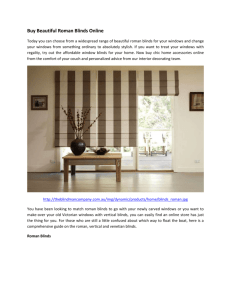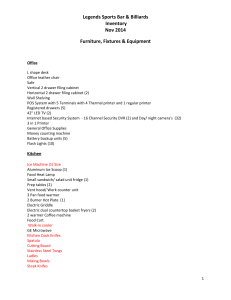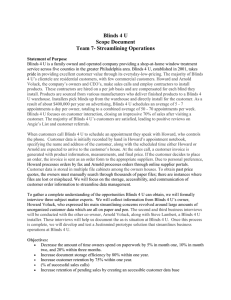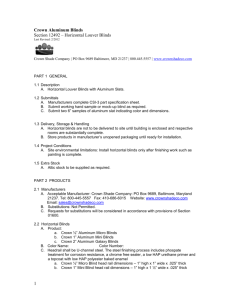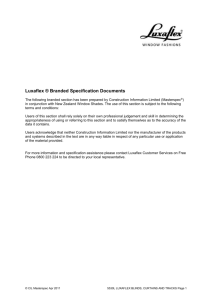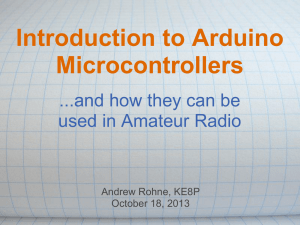Smart Window Blinds
advertisement
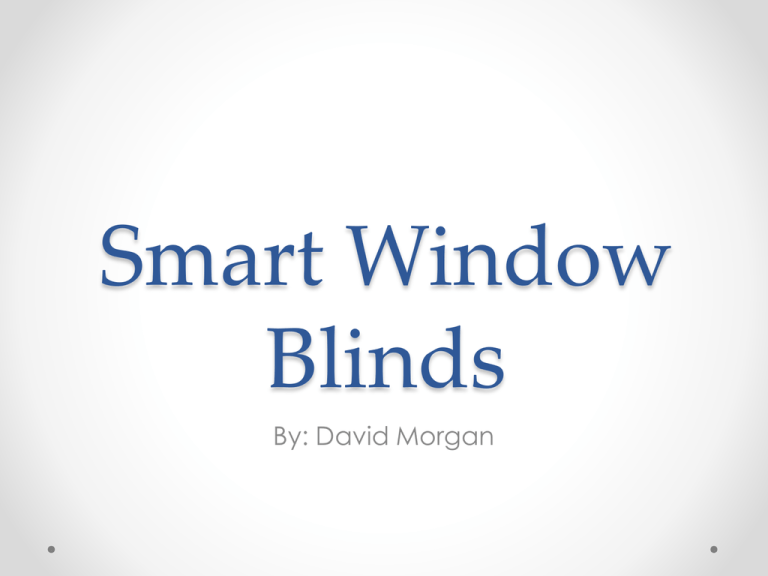
Smart Window Blinds By: David Morgan Idea Origination • Repetitive process of opening window blinds • Open during the day for plants to absorb sunlight • Close during the night for privacy • Such smart blinds are not sold in stores. The only match, is button blinds. Smart Blind Function • When light sensor detects light open the blinds • When light sensor detects no light, close the blinds • A button where a user can manually bypass the light sensor • Original idea was to power the hardware by mini solar panels, but user feedback eliminated this idea Project Hardware • • • • • • • • • • • Arduino - microcontroller board, which makes logical decisions Wires - steel wires covered with plastic insulation, which connect hardware components Servo motor - 360 degrees motor, which opens and closes the blinds Servo connectors - connects the servo motor to the window blinds Solder - metal alloy when melter, firmly binds two metal hardware pieces and conducts electricity Glue - adhesive material which binds two components together and acts as an insulator Window blinds - regular blinds on which will be used for demonstrating project Light sensor - detects and reports on the brightness of the light Resistors - 10K resistor, to lower voltage Button - button used for manually opening and closing the blinds Plastic – plastic box for Arduino Project Tools • • • • • • • • • • • • • • Desktop Computer - runs Arduino program Arduino Software - code for Arduino is written in it Google Sketchup - plots 3-d objects, for plastic printer Documentation sources- books and websites which provide documentation how to use software Plastic printer - prints outer box using plastic which would extent the life of device by protecting it from: External damage - i.e. If it falls down or someone accidentally bumps it, the device would stay in one piece Dust - dust on naked hardware could create contacct for electricity and cause some componet to melt USB cable - type A male to type B female cable, which Soldering Iron - melts solder, to hold hardware components together Breadboard - Board used to connect components together, before soldering LEDs - lights used for testing purposes Multimeter - tests voltage, amps and watts to detect the problem and determine which component is not functioning Hot Glue Gun - melt the glue, to hold non-metal components together Google Sketchup & Plastic Printer Software – used to design platic box Testing & Unexpected Issues • Flourescent Light Blinking Issue - Sunlight and Moonlight test passed • Servo attachment & slippage issue • Unreliable hardware malfunction • Servo and light sensor not always precise User Feedback • Many end-users do not care about project specifics as long as Smart blinds perform their function correctly • Condense physical hardware seen to the end-user • Implement a clock to better accurately know when to close and when to open blinds • Remote control to open/close blinds
